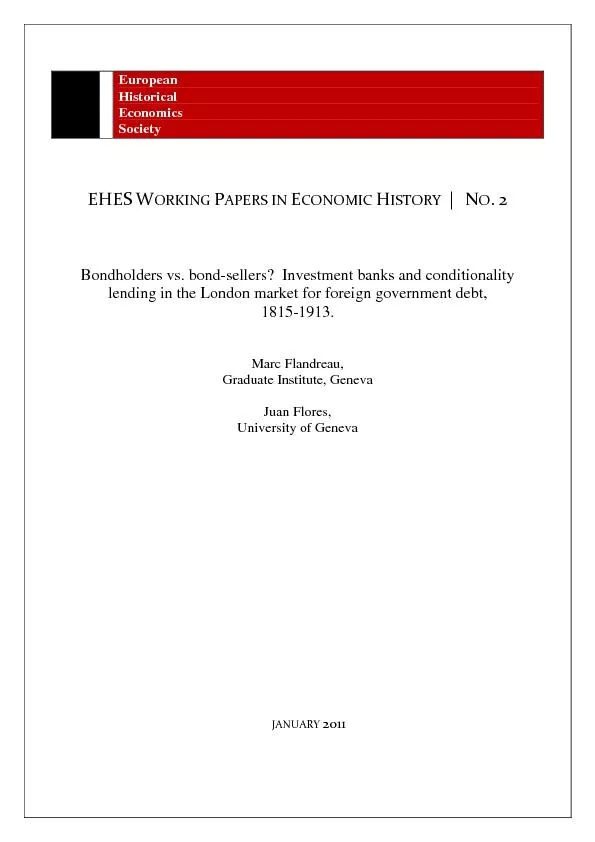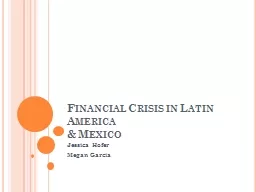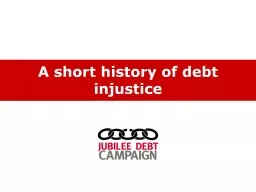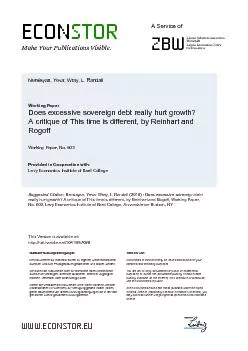PDF-ORKINGCONOMICfor foreign government debt, University of Geneva ...
Author : trish-goza | Published Date : 2016-05-15
European Historical Economics Society JANUARY2011 for foreign government debt University of Geneva This paper offers a theory of conditionality lending in 19thcentury
Presentation Embed Code
Download Presentation
Download Presentation The PPT/PDF document "ORKINGCONOMICfor foreign government debt..." is the property of its rightful owner. Permission is granted to download and print the materials on this website for personal, non-commercial use only, and to display it on your personal computer provided you do not modify the materials and that you retain all copyright notices contained in the materials. By downloading content from our website, you accept the terms of this agreement.
ORKINGCONOMICfor foreign government debt, University of Geneva ...: Transcript
Download Rules Of Document
"ORKINGCONOMICfor foreign government debt, University of Geneva
..."The content belongs to its owner. You may download and print it for personal use, without modification, and keep all copyright notices. By downloading, you agree to these terms.
Related Documents













